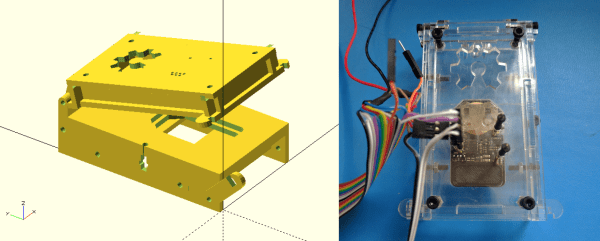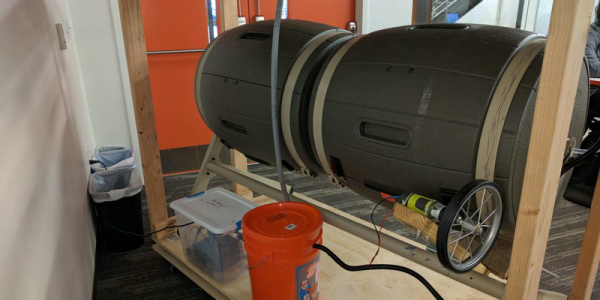The Nintendo Power Glove was one of the amazing 1980s experiments in alternative user interfaces for video games. It was bad. It was cool, but it was bad. Recently, interest in the Power Glove has grown thanks to an amazing stop motion animator. Prices of these gloves have gone through the roof, and the Power Glove is in the middle of a resurgence not seen since the feature-length motion picture advertisement for Super Mario Bros. 3.
[Nolan Moore] is a fan of the Power Glove, and after finding a highly collectible new in box Power Glove, he decided to take this wearable to the next level. It’s now sporting custom circuit boards, it can control a drone, and talks wirelessly to every device on the planet. It’s also [Nolan]’s entry for the Hackaday Prize.
First up, the glove itself. [Nolan] was lucky enough to find a new, in shrink-wrapped plastic, Famicom Power Glove. His old one had been in storage for 27 years, and this new old-stock version gives him a beautiful matte glove, flex sensors that work, and brand new everything. You can take a look at the unboxing here.
A Power Glove is only as cool as the electronics inside, and that means tearing out the old boards, the old ultrasonic sensors, and a rats nest of wiring. This meant [Nolan] had to spin a few PCBs, integrating a Teensy, an IMU module, battery, and an ESP8266. This is the Power Glove as it would be invented today – perfection in 80s cyberpunk.
We first saw [Nolan]’s Power Glove at the Bay Area Maker Faire last summer. Here, [Nolan] was flying a quad around a netted cage, his replacement Power Glove electronics, and his fist-pumping grin. It’s a great project, and one we’re happy to show off in the Hackaday Prize.

























